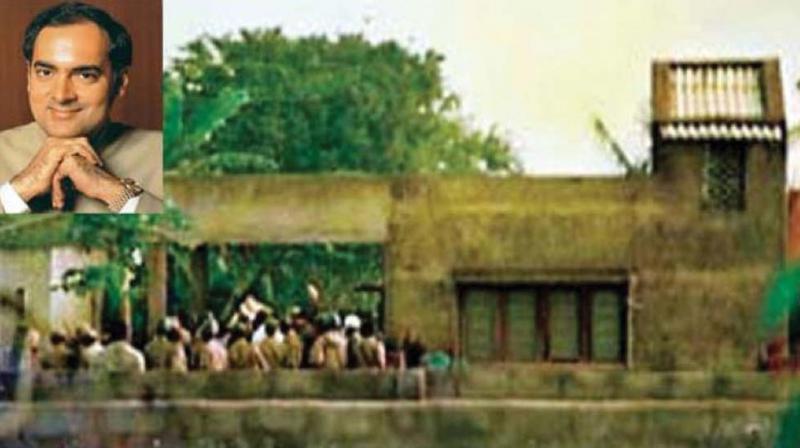Days before assassination, Rajiv took a stroll down MG Rd

BENGALURU: Days before he was assassinated by an LTTE suicide bomber in Sriperumbudur in Tamil Nadu, former prime minister Rajiv Gandhi had taken a stroll down the iconic MG Road in the city with then city police commissioner Ramalingam in tow. The city's top cop had the jitters. This was after all, a former prime minister, and not many knew - but they had already been one serious attempt against his life. But that day in Bengaluru, he seemed as if he didn't have a care in the world, probably secure in the belief that the Congress party that he headed would come back with the biggest majority in the country's electoral history.
“Walking with him was the late S. Bangarappa, who was the chief minister,” recalls Ramalingam while talking to Deccan Chronicle.
“I was very tense and scared. I was worried that something could happen. He was facing all kinds of risks and as if what I had sensed came true, only days later, he was assassinated. He was so free and open that day, walking down Brigade Road that was swarming with people, as if he didn't have a care in the world," recalls the top cop, who went on to narrate the chilling sequence of events that led to the hunt that led them to Rajiv's assassins in an isolated house in Konanakunte three months later, a day before Rajiv would have brought in his 47th birthday.
Today, on what would have been his 75th birthday - if he had been alive - Ramalingam recounts how he tracked down the top LTTE cadre involved in the planning and execution of the assassination and found the mastermind, Sivarasan, dead from a bullet wound to his head, at a house in the South Bengaluru locality before they could be captured on August 18, 1991 - two days shy of Rajiv's birthday.
Asked if there was a possibility of capturing the assassins alive, he said this was a question he had faced over and over, right from the day the operation was carried out.
"Five of the LTTE militants took cyanide pills and killed themselves before the operation, with the inputs we got suggesting they had AK 47 rifles besides cyanide. The moment they knew the police were there, they opened fire and consumed cyanide. We actually informed the CBI office but they wanted the NSG to reach the spot as the police did not have the required expertise to blast open the door of the house, where they were hiding and carry out the operation," he maintains.
"Initially about 10 to 15 policemen in mufti were deployed around the house but when the news leaked to the media, the deployment was increased to 500. It was raining and we waited for the National Security Group (NSG) to arrive," Ramalingam recalls.
The operation was planned for 5 am the next morning but then the circumstances forced a standoff on the night of August 18 itself. When the forces entered the house, the militants were found dead, he said, recalling how a slip of paper with an address and a name which was found in the Malavalli forest of Mandya district during a raid, led them to the assassins.
Ramalingam, now leads a retired life and has no qualms about saying that the Konanakunte operation was one of the most important missions of his life. The credit for identifying the hide-out of the assassins and encircling them before the mass suicide goes to the Bengaluru police, he adds. But showing how much time has passed, Ramalingam admits that the last link he had with those turbulent times is gone .
"I had photographs of the operation but I recently disposed them off," says Ramalingam.

